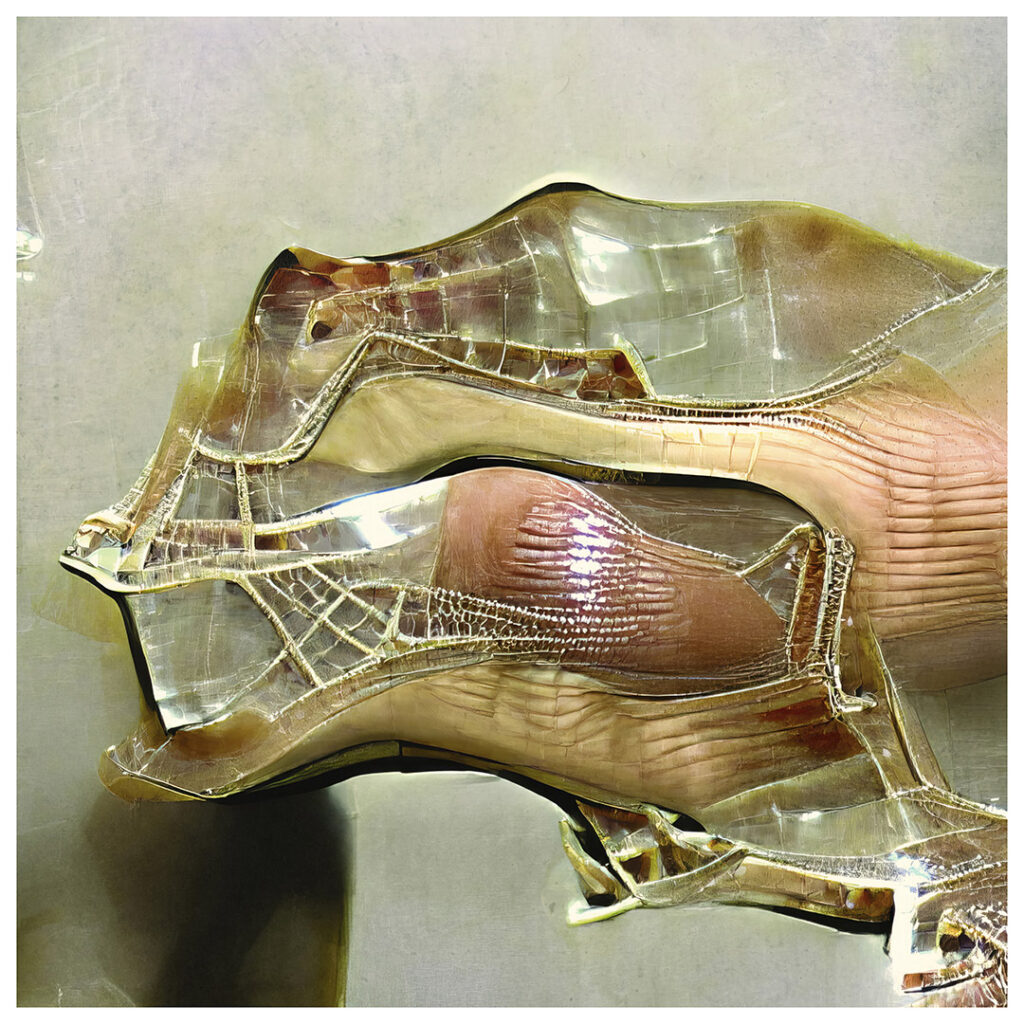E-phemeral Skin


Acquisition collection BNF
This book takes the first sentences of Jean-François Lyotard’s Libidinal Economy (1974). This introduction has a very particular style for a work of philosophy. As was often the case at that time, the openings of this philosopher’s books are literary, intense, analogical and experimental. They evoke experiences and sensations at the limit of discursive thought. Here, the writing seems to operate a body at the limit of the human and to open it under all its folds. The opening of the pages becomes the opening of a monstrous organism half-material half-conceptual.
The artist has programmed an AI capable of interpreting fragments of this text in the form of images by combining, transforming and dismantling a stock of existing images consisting of 14 million documents. The images thus produced are cultural syntheses, images of images according to a monstrous recursivity which is similar to the body that Lyotard tries to make emerge from his writing. The images follow one another, as if disconnected from a text that retains all its autonomy.
The reference to Discourse, Figure (1971), a major work that precisely addresses the problematic relationship between text and image, consists here in thwarting illustration and commentary, by creating another body, alien and bipolar between text and image. It is a book of books, an ephemeral skin that peels off a body and settles on the pages.
Ce livre reprend les premières phrases d’Economie libidinale (1974) de Jean-François Lyotard. Cette introduction a un style très particulier pour un ouvrage de philosophie. Comme souvent à cette époque, les ouvertures des livres de ce philosophe sont littéraires, intenses, analogiques et expérimentales. Elles évoquent des expériences et des sensations à la limite de la pensée discursive. Ici, l’écriture semble opérer un corps à la limite de l’humain et l’ouvrir sous tous ses plis. L’ouverture des pages devient l’ouverture d’un organisme monstrueux mi-matériel mi-conceptuel.
L’artiste a programmé une IA capable d’interpréter des fragments de ce texte sous forme d’images en combinant, transformant, démantelant un stock d’images existantes constitué de 14 millions de documents. Les images ainsi produites sont des synthèses culturelles, des images d’images selon une récursivité monstrueuse qui s’apparente au corps que tente de faire émerger Lyotard de son écriture. Les images se suivent, comme déconnectées d’un texte qui garde toute son autonomie.
La référence à Discours, Figure (1971), ouvrage majeur qui aborde justement la relation problématique entre le texte et l’image, consiste ici à déjouer l’illustration et le commentaire, en créant un autre corps, alien et bipolaire entre le texte et l’image. C’est un livre de livre, une peau éphémère qui se décolle d’un corps et se dépose sur le pli des pages.
